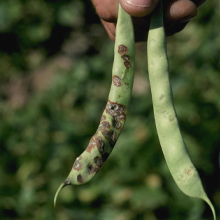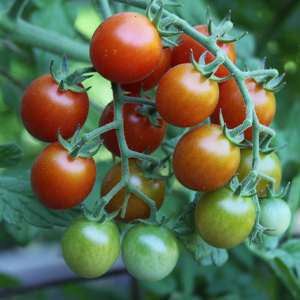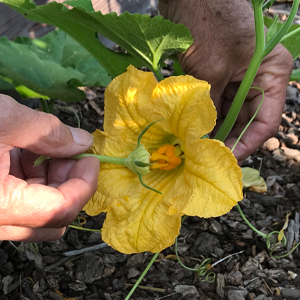-
 Thanh toán đa dạng, linh hoạtChuyển khoản ngân hàng, thanh toán tại nhà...
Thanh toán đa dạng, linh hoạtChuyển khoản ngân hàng, thanh toán tại nhà... -
 Miễn Phí vận chuyển 53 tỉnh thànhMiễn phí vận chuyển đối với đơn hàng trên 1 triệu
Miễn Phí vận chuyển 53 tỉnh thànhMiễn phí vận chuyển đối với đơn hàng trên 1 triệu -
 Yên Tâm mua sắmHoàn tiền trong vòng 7 ngày...
Yên Tâm mua sắmHoàn tiền trong vòng 7 ngày...
The Vegetable Garden Problem Solver Handbook: Identify and manage diseases and other common problems on edible plants
-

- Mã sản phẩm: 0760377480
- (52 nhận xét)

- Publisher:Cool Springs Press (February 7, 2023)
- Language:English
- Paperback:224 pages
- ISBN-10:0760377480
- ISBN-13:978-0760377482
- Item Weight:1.7 pounds
- Dimensions:8 x 0.8 x 9.95 inches
- Best Sellers Rank:#39,067 in Books (See Top 100 in Books) #2 in Agricultural Insecticides & Pesticides #25 in Organic Gardening & Horticulture (Books) #34 in Vegetable Gardening
- Customer Reviews:4.9 out of 5 stars 52Reviews

Mô tả sản phẩm
From the Publisher
Space Your Plants Appropriately

While you’re reading your seed packets or plant tags, take note of how far apart you should space the seeds or seedlings. It’s tough to overcome the desire to squeeze as many plants as possible into a bed, but if they’re competing with each other for space, moisture, and nutrients, the plants will struggle. They might not have enough room to produce their crop and their close proximity can facilitate the spread of disease. As you’ll learn in this book, proper spacing to enhance air flow is one of many simple strategies for reducing disease problems.

FUNGAL DISEASES
Fungi and fungi-like microorganisms are responsible for the majority of vegetable plant diseases. From a historical standpoint, the most devastating fungus has been Phytophthora infestans, which causes potato late blight. Back in the 1800s, the people of Ireland were completely dependent upon their potato crops. When this disease struck, it destroyed the foliage and tubers of their plants for successive years. This led to the Irish potato famine, which began in 1845. Over one million people starved to death as a result. This is a sobering example of the potential for certain diseases to severely impact the crops humans rely upon for food.

ALTERNARIA LEAF SPOT
Alternaria leaf spot, which is also referred to as Alternaria leaf blight, is a common fungal disease that affects members of the cabbage and cucurbit families of crops. Melons are particularly susceptible. Look for round, brown leaf spots containing concentric rings, which are primarily on older leaves near the crown of the plant. Spots may be surrounded by yellow halos, and the centers of the spots sometimes drop out of the leaves, giving them a “shothole” appearance.

BACTERIAL BLIGHT
Bacterial blight is common in regions that experience prolonged periods of warm temperatures and high humidity. Two main types of bacterial blight will affect the leaves and pods of beans and peas: common blight and halo blight. Common blight bacteria exist on a variety of plants and weeds but only infect legume family crops. It appears as dry, brown spots or lesions that are surrounded by a yellow border. Halo blight lesions appear on the undersides of leaves and have a pale-colored halo around each spot.

EARLY BLIGHT
This common fungal disease infects tomatoes, eggplants, potatoes, and weeds belonging to the nightshade family. Peppers are not susceptible to it. It usually doesn’t kill plants but weakened plants will produce smaller and damaged fruits. Look for brown leaf spots with concentric rings and yellow halos, starting on oldest leaves first. With time, the spots enlarge and spread, and the leaves turn yellow and may fall off. Stems may have sunken spots or dark, leathery lesions. A dark, sunken spot with concentric circles may appear on the stem end of eggplant or tomato fruits.

SEPTORIA LEAF SPOT
Septoria leaf spot is a disease that affects the leaves and some fruits of plants. It most commonly infects celery, tomatoes, winter squash, and pumpkin plants, although other members of their respective plant families can be infected by the fungus. This disease is especially prevalent during prolonged periods of warm, wet weather. The spores are spread by splashing water or rain. On nightshade crops like tomatoes, look for small, brown spots with yellow halos on leaves and stems, starting on the lowest leaves first. On cucumbers and melons, look for small, water-soaked leaf spots that are brown or white. Infected fruits have small, white, raised spots.
POLLINATION ISSUES - Here are some pollination-related issues that gardeners most frequently encounter and ways to solve them:

CORN
If your corn patch wasn’t very productive last year or the cobs were missing a lot of kernels, chances are the plants were arranged in single or double rows rather than being planted in multirow blocks. At pollination time, corn plants send up tassels with pollen-containing anthers attached to them. The silks, which are part of the female flowers, are wind pollinated. When conditions are right, the pollen grains are released from the anthers and drop onto the silks below. The best pollination rates occur within block plantings rather than individual rows, because the close proximity within a block provides the pollen with many more “targets.

NIGHTSHADE FAMILY
Tomato, pepper, and eggplant flowers are self-pollinating, but if the plants aren’t producing fruits, there are some simple methods help them out. To move the pollen within the blossoms, consider shaking or flicking them. Some gardeners use a battery-operated toothbrush to vibrate the flower stalks, which mimics bee pollination activities. These crops are pollinated naturally by bumblebees who use “buzz pollination” to knock the pollen loose and fertilize the flowers. Add flowers to your garden that are loved by bumblebees.

CURCURBITS
It’s not unusual for members of the cucurbit family (cucumbers, melons, pumpkins, and squash) to experience pollination-related problems. In these cases, the plants are growing well and blooming, but they aren’t producing any fruit. If this is happening to you, there might be a lack of pollinators. Attract them by planting some annual flowers in your veggie garden. In addition, sometimes cucurbit plants go through a period where they only produce flowers of one sex. The good news is that with time, more flowers will arrive of both genders. And lastly, sometimes plants don’t develop female flowers at all when the weather is excessively hot or cold. It can also result from repeated applications of nitrogen fertilizers.

BLOSSOM END ROT
Blossom-end rot is most easily recognized by the presence of a sunken, brown bottom tip on the developing fruits of tomatoes and zucchinis, but it also can occur on other cropssuch as melons, squash, eggplants, and peppers. The underlying problem is a calcium deficiency within the developing fruits. The primary causes are hot, dry conditions and irregular watering. For fruits to develop normally, plant roots need to be able to transport calcium from the soil into the plants and up to the fruits. To do that, the roots require moisture. Overuse of high nitrogen fertilizers also causes blossom-end rot because they promote leafy growth, which robs calcium from the fruits. You might think that applying calcium to your soil is the answer, but if the soil around the plants isn’t watered regularly, there is no way for the calcium to get into the plants through the roots.
Foliar applications of calcium won’t help either because it isn’t able to move from the leaves to the fruits. While blossom-end rot can affect nearly every variety of tomato, it impacts elongated plum tomatoes the most. Cherry tomatoes are typically not affected by it at all.
STRATEGIES
- Place mulch around the base of susceptible crops to help the soil retain moisture.
- Avoid overfeeding your plants with high-nitrogen fertilizers.
- Use shade cloth during excessive heat to shelter susceptible plants from the intensity of the sun.
- Mua astaxanthin uống có tốt không? Mua ở đâu? 29/10/2018
- Saffron (nhụy hoa nghệ tây) uống như thế nào cho hợp lý? 29/09/2018
- Saffron (nghệ tây) làm đẹp như thế nào? 28/09/2018
- Giải đáp những thắc mắc về viên uống sinh lý Fuji Sumo 14/09/2018
- Công dụng tuyệt vời từ tinh chất tỏi với sức khỏe 12/09/2018
- Mua collagen 82X chính hãng ở đâu? 26/07/2018
- NueGlow mua ở đâu giá chính hãng bao nhiêu? 04/07/2018
- Fucoidan Chính hãng Nhật Bản giá bao nhiêu? 18/05/2018
- Top 5 loại thuốc trị sẹo tốt nhất, hiệu quả với cả sẹo lâu năm 20/03/2018
- Footer chi tiết bài viết 09/03/2018
- Mã vạch không thể phân biệt hàng chính hãng hay hàng giả 10/05/2023
- Thuốc trắng da Ivory Caps chính hãng giá bao nhiêu? Mua ở đâu? 08/12/2022
- Nên thoa kem trắng da body vào lúc nào để đạt hiệu quả cao? 07/12/2022
- Tiêm trắng da toàn thân giá bao nhiêu? Có an toàn không? 06/12/2022
- Top 3 kem dưỡng trắng da được ưa chuộng nhất hiện nay 05/12/2022
- Uống vitamin C có trắng da không? Nên uống như thế nào? 03/12/2022
- [email protected]
- Hotline: 0909977247
- Hotline: 0908897041
- 8h - 17h Từ Thứ 2 - Thứ 7
Đăng ký nhận thông tin qua email để nhận được hàng triệu ưu đãi từ Muathuoctot.com
Tạp chí sức khỏe làm đẹp, Kem chống nắng nào tốt nhất hiện nay Thuoc giam can an toan hiện nay, thuoc collagen, thuoc Dong trung ha thao , thuoc giam can LIC, thuoc shark cartilage thuoc collagen youtheory dau ca omega 3 tot nhat, dong trung ha thao aloha cua my, kem tri seo hieu qua, C ollagen shiseido enriched, và collagen shiseido dạng viên , Collagen de happy ngăn chặn quá trình lão hóa, mua hang tren thuoc virility pills vp-rx tri roi loan cuong duong, vitamin e 400, dieu tri bang thuoc fucoidan, kem chống nhăn vùng mắt, dịch vụ giao hang nhanh nội thành, crest 3d white, fine pure collagen, nên mua collagen shiseido ở đâu, làm sáng mắt, dịch vụ cho thue kho lẻ tại tphcm, thực phẩm tăng cường sinh lý nam, thuoc prenatal bổ sung dinh dưỡng, kem đánh răng crest 3d white, hỗ trợ điều trị tim mạch, thuốc trắng da hiệu quả giúp phục hồi da. thuốc mọc tóc biotin



























 KHUYẾN MÃI LỚN
KHUYẾN MÃI LỚN Hỗ Trợ Xương Khớp
Hỗ Trợ Xương Khớp Bổ Não & Tăng cường Trí Nhớ
Bổ Não & Tăng cường Trí Nhớ Bổ Sung Collagen & Làm Đẹp
Bổ Sung Collagen & Làm Đẹp Bổ Thận, Mát Gan & Giải Độc
Bổ Thận, Mát Gan & Giải Độc Chăm Sóc Sức khỏe Nam Giới
Chăm Sóc Sức khỏe Nam Giới Chăm Sóc Sức khỏe Nữ Giới
Chăm Sóc Sức khỏe Nữ Giới Chăm sóc Sức khỏe Trẻ Em
Chăm sóc Sức khỏe Trẻ Em Thực Phẩm Giảm Cân, Ăn Kiêng
Thực Phẩm Giảm Cân, Ăn Kiêng Bổ Sung Vitamin & Khoáng Chất
Bổ Sung Vitamin & Khoáng Chất Bổ Tim Mạch, Huyết Áp & Mỡ Máu
Bổ Tim Mạch, Huyết Áp & Mỡ Máu Bổ Mắt & Tăng cường Thị lực
Bổ Mắt & Tăng cường Thị lực Điều Trị Tai Mũi Họng
Điều Trị Tai Mũi Họng Sức Khỏe Hệ Tiêu hóa
Sức Khỏe Hệ Tiêu hóa Chăm Sóc Răng Miệng
Chăm Sóc Răng Miệng Chống Oxy Hóa & Tảo Biển.
Chống Oxy Hóa & Tảo Biển.